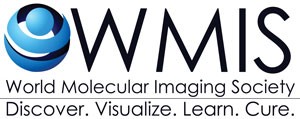Optical Surgical Navigation: The Future of Fluorescence Guided Surgery
Molecular Imaging and Biology seeks outstanding articles for publication in a special issue on Optical Surgical Navigation: The Future of Fluorescence Guided Surgery.
Guest Editors:

Summer Gibbs, Ph.D.
Oregon Health & Science University; Portland, OR

Edward J. (Jim) Delikatny, Ph.D.
University of Pennsylvania, Philadelphia, PA

John Y.K. Lee, M.D.
University of Pennsylvania, Philadelphia, PA
Fluorescence guided surgery (FGS) is a growing field requiring the intersection of engineering, chemistry, pharmacology and medicine. We welcome traditional articles that describe novel science behind instrumentation or contrast agent development as well as clinical translation of FGS systems or contrast. We also welcome reviews of FGS as well as commentary on needs in the field.
ORIGINAL ARTICLES are full accounts of significant research or clinical investigations. Articles should be definitive in their conclusions. Articles should have the following sections: Title page, structured Abstract, Introduction, Materials and Methods, Results, Discussion, Conclusions, Acknowledgments, Author Contributions, Conflict of Interest Statement, References, and Figure Legends, in that order. Articles should be no longer than 5500 words inclusive of abstract, main text, figure legends, and references and have no more than 6 figures. Excess verbiage and figures should be included in Electronic Supplementary Material.
BRIEF ARTICLES should have the same scientific quality and presentation format of full articles, but with more limited scope. Manuscripts should not be longer than 3000 words (4 to 5 journal pages) including Abstract, Introduction, Materials and Methods, Results, Discussion, Conclusions, Acknowledgments, Author Contributions, Conflict of Interest Statement, References, tables, and with no more than 4 figures.
REVIEWS are informative and critical accounts provided by a forum of experts to cover a variety of subjects in new, emerging areas in the field or at appropriate times to consolidate a body of research into a conceptual presentation. In general, the length of review articles should not exceed 7000 words inclusive of abstract, main text, figure legends, and references and be limited to 8 figures.
COMMENTARIES are accounts on topics of current significance in the field that could influence the scientific interests (new programmatic initiatives by NIH, NSF, DOE, Universities, and companies having a major impact on molecular imaging) or clinical practice (i.e., regulatory or clinical reimbursement) of the reader.
- Authors submit their manuscript by July 1, 2022.
- Target date for publication is August 2022.
Note: Articles will be published OnLine First ahead of the printed issue.
For further information, including key dates and submission details, please contact the editors. Please read the instructions for authors before submitting.
